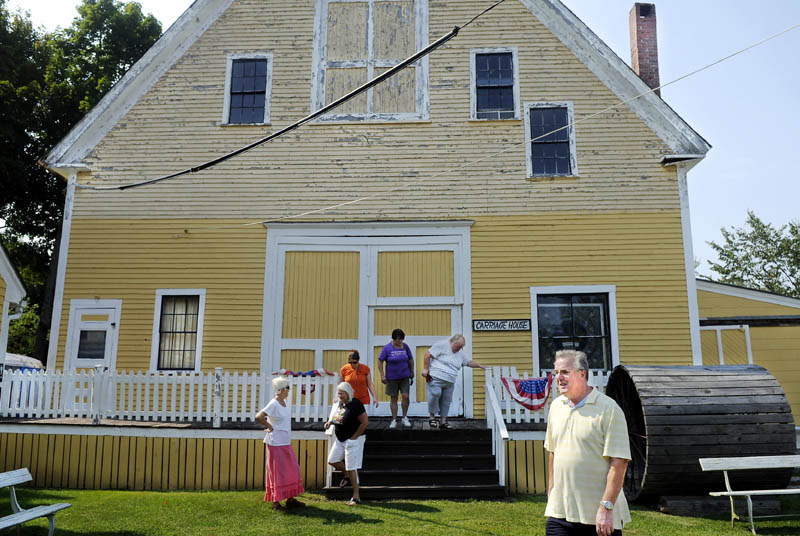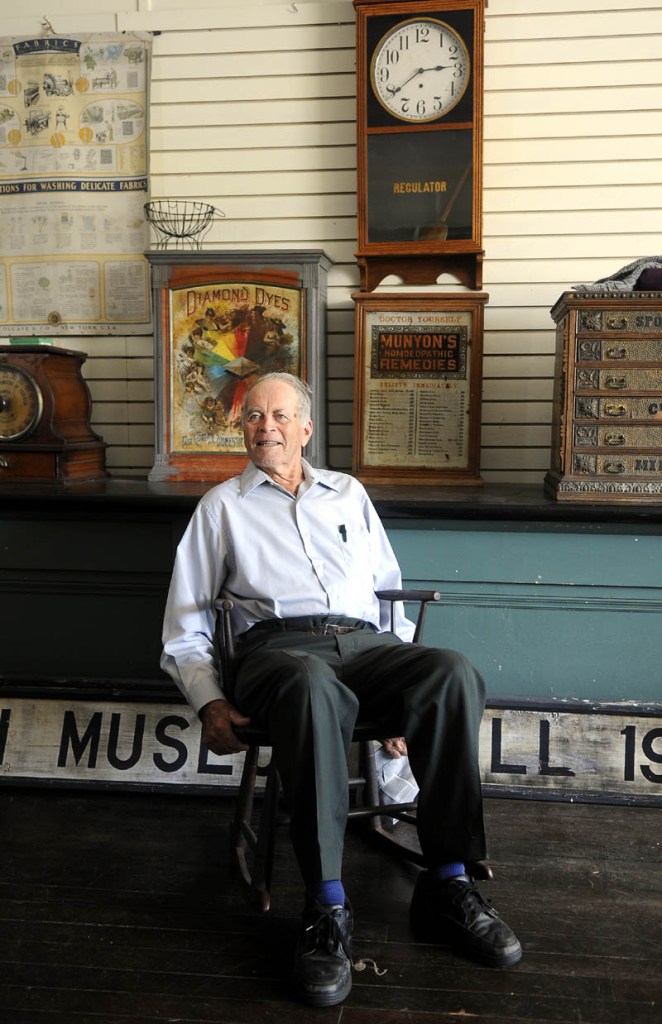MONMOUTH — The farms are mostly gone now. Only the stories remain.
Even those are disappearing with frightening regularity as the men and women who lived them watch their hair turn gray and memories fade.
The overgrown apple orchards and towering barns offer reminders of what used to be, before Monmouth morphed from an agricultural haven into a bedroom community popular for its proximity to Augusta, Lewiston and Auburn. Giving voice to that silent testimony is at the heart of the Monmouth Museum’s new book, “Recalling Monmouth’s Greatest Turf and Farm Era.”
“If we don’t tell the story now, it won’t get told,” said Rudy Johnson, who worked with Bobbie Bowler, Larry Buggia and Freeman Lloyd McCabe to edit the book. “We wrote about the Monmouth farmer.”
“Recalling Monmouth’s Greatest Turf and Farm Era” pulls together a collection of photographs and reflections on the town’s agricultural history. McCabe, who moved to town as a 6-year-old in 1931, spent much of his life working his family’s dairy and farm on Cobbosseecontee Road.
“Back in the ’30s it was also used to produce sweet corn for the factories,” McCabe said.
It turns out there were two such factories in Monmouth and another in Winthrop. They went under in the 1940s when farm production moved to the mid-west.
McCabe will turn 89 this fall, but he could easily pass for a man 20 years his junior. He still speaks with a farmer cadence, gentle and warm, and recalls the town’s agricultural history with textbook clarity. McCabe hasn’t milked a cow since he sold his herd in 1969, but his farmer’s soul will be with him until he dies.
“I sold the farm (in 1999) because of the high real estate taxes. There was not enough income to pay the taxes,” he said. “I was attached to it. I even missed milking cows, but the facts dictated I get out before I lost my shirt. But that’s life. Most people by the time they turn 85 are trying to get rid of collectibles. If they don’t somebody else is going to have to do it when they die.”
McCabe lived through much of the history explored in Monmouth Museum’s new book. in more than 300 pages contributors share stories about specific farms, look at the town’s once-thriving apple, poultry and dairy businesses, and look at how farming shaped the social fabric of the community.
“It was a time when neighbors were really neighbors, and not simply people who lived across the street,” Johnson wrote in the book’s introduction. “It was a time when those neighbors gathered to help raise barns and assist each other with gathering their crops.”
Monmouth, and the world around it, has changed at warp speed since McCabe’s parents purchased the Keene Family Farm for $1,200 in 1931. At the time most farmers had a small herd of milk cows, maybe a dozen head, and milked by hand, McCabe wrote in the book. His father bought his first tractor, a John Deere General Purpose Tractor with steel wheels, in 1935. Two years later he bought his first tractor with rubber tires. The tractor came with a two-row cultivator, which increased production considerably.
Farms started to diversify when production moved west in 1940, McCabe said. Farms increased the size of their dairy herds or started hen or egg production, in an effort to diversify.
“Broiler production increased until fuel oil prices rose beyond profitable income,” McCabe wrote. “Then broiler production moved to the southeastern U.S. where it cost less to heat the rearing houses.”
That narrative was repeated over and over as farmers struggled to keep income ahead of expenses. The McCabe farm, which at one point was milking about 45 cows, gave up the fight in 1969.
“Like the poultry business the milking business was going under, too,” McCabe said.
McCabe continued to sell hay — some of it even made its way to the H.P. Hood farm in Peabody, Mass. — and lease his property for the next 30 years, until that, too, generated too little to hold on.
The Clemdow farm is the last dairy farm in Monmouth, and the owners are always under financial pressure, McCabe said. Most of the town’s apple and poultry businesses disappeared years ago.
“It’s a sad situation,” McCabe said.
The museum printed 150 books in its first run, and it quickly sold out. A second printing is in the works. Copies may be purchased at the Monmouth Museum during business hours 1-4 p.m., Wednesday through Sunday.
Johnson, who was born in 1949, said most of those who have bought the book are from his generation. In a way it is a story of their youth.
“What we wrote typifies Monmouth,” Johnson said.
Though specific to Monmouth, the stories and history closely mirror those told throughout the state. Just about every small town has an agricultural heritage waiting to be exposed to a new generation.
“It wouldn’t surprise me if you see some surrounding towns do this,” Johnson said. “All of them were farming communities. We wrote about the Monmouth farmer.”
Send questions/comments to the editors.




Success. Please wait for the page to reload. If the page does not reload within 5 seconds, please refresh the page.
Enter your email and password to access comments.
Hi, to comment on stories you must . This profile is in addition to your subscription and website login.
Already have a commenting profile? .
Invalid username/password.
Please check your email to confirm and complete your registration.
Only subscribers are eligible to post comments. Please subscribe or login first for digital access. Here’s why.
Use the form below to reset your password. When you've submitted your account email, we will send an email with a reset code.